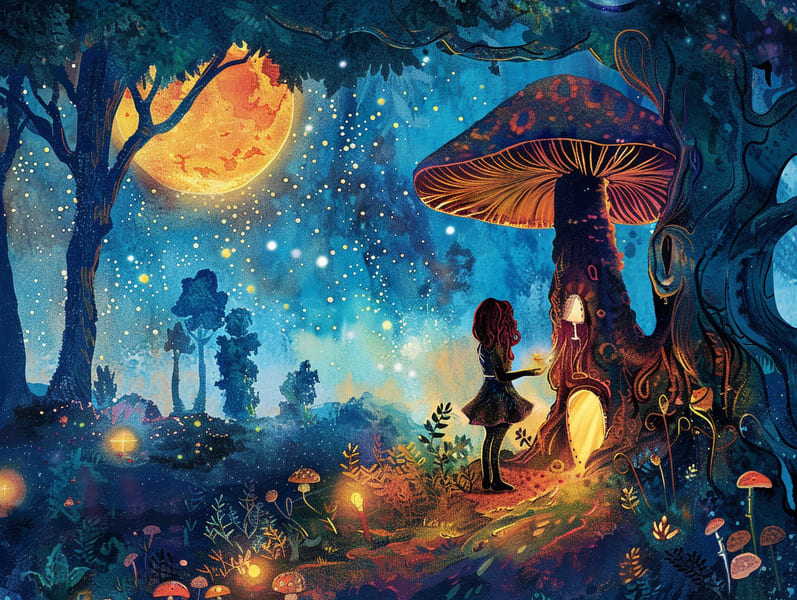The Creation of Best Fairy Tales with Their Unwavering Mystique.
The Creation of Best Fairy Tales with Their Unwavering Mystique.
Blog Article

Short fairy tales have historical significance. These stories have been narrated from one generation to the next long before they were ever published. They arose from a variety of backgrounds, including American traditions. They were initially transmitted among older generations, often carrying themes and messages reflective of the societal norms and beliefs of the time.
The Grimm brothers, the two Grimm brothers, were among the first to gather and publish many of these beloved fairy tales. Their published works, "Grimm's Fairy Tales," included narratives like "The Little Glass Slipper," "Little Brother and Little Sister," and "Snow White," which have since become essentials in the world of iconic fairy tales. Similarly, Hans Christian Andersen's charming stories, such as "The Mermaid's Tale," and "The Little Duckling," have stolen hearts worldwide, cementing their place in the pantheon of treasured fairy tales.
Despite their historical roots, traditional fairy tales remain as impactful as ever, especially as children's night stories. These fantastical tales are now available in different formats, including gorgeously illustrated books, charming animations, and digital fairy tales.
Their unwavering allure can be linked to several charming aspects:
Moral Lessons: Ancient fairy tales often impart important moral lessons. Tales like "The Tale of the Boy Who Cried Wolf" teach the importance of sincerity, while "The Tale of the Tortoise and the Hare" point out the merits of perseverance and modesty. These narratives offer the young clear distinctions between ethical and unethical, forming their moral compass in a tender yet lasting way.
Empathy and Understanding: Classic fairy tales frequently feature heroes facing trials and tribulations, inspiring readers to empathize with their struggles and back their triumphs. For instance, "Beauty and the Beast" points out the value of seeing inner beauty to recognize the true nature of a soul, developing understanding and appreciation.
Cultural Knowledge: Many timeless fairy tales are imbued with the cultural contexts from which they originated. Engaging with these fairy tales can provide enlightening views into different customs, developing a sense of global insight and acknowledgment.
Fantasy and Innovation: The supernatural elements in fairy tales—supernatural elements—engender children’s creative dreams. These fairy tales move readers to extraordinary realms, motivating innovative dreams and a sense of mystery that persists a lifetime.
Traditional fairy tales are not only fascinating but also illuminating. They serve as charming tools in promoting various cognitive and emotional skills in children. When ancient fairy tales are spoken out loud, they nurture linguistic abilities by teaching new terms and meanings and sophisticated sentence structures. This practice also improves listening skills and concentration, as little ones remain attentive, enthusiastic to see what happens next.
Furthermore, exploring the themes and characters of ancient fairy tales can advance thought processes and cognitive skills. The young are educated to identify patterns, guess what will happen, and know cause and effect. These deliberations also benefit children say their thoughts and feelings, enhancing their emotional intelligence.
In today’s cyber age, the existence of online fairy tales has made these tales more within reach than ever. Websites and programs make available huge assortments of traditional fairy tales that can be explored or heard anytime, anywhere. Fairy tales spoken are particularly liked, sharing an fun way for children to immerse in these alluring stories. Audiobooks and voiced videos carry characters and settings to life, often joined by magical music and songs that boost the narrative experience.
The unfading fascination of old fairy tales lies in their ability to evolve to today's world while retaining their fundamental ideas. Contemporary updates of these narratives often present more representative figures and modern settings, making them relevant to today’s audience. However, the key lessons of fearlessness, kindness, and justice remain unchanged, continuing to connect with young listeners of all ages.
Timeless fairy tales also offer a sense of security and recognition. They present to a well-arranged narrative with a transparent beginning, middle, and end, often drawing to a close with the settlement of conflicts and the triumph of goodness over badness. This reliability can be relieving for the young, spreading a sense of dependability in an ever-changing world.
Classic fairy tales continue to delight and educate new generations, maintaining their beauty and pertinence in modern society. As children's bedtime stories, they put forth a perfect blend of fascination and comprehension, nourishing moral values, empathy, and creativity. The existence of digital fairy tales and the commonness of fairy tales read out loud assure that these traditional tales remain available to new generations.
By protecting and divulging these narratives, we continue to extol the rich tapestry popular fairy tales with morals of fantasy and cultural heritage. Whether you are perusing a beautifully illustrated book, experiencing a electronic collection, or listening on an read-aloud story, the captivation of children's fairy tales is always within reach. These tales point out of the timeless force of tales and its ability to connect us across eras and regions.
If you are viewing a richly illustrated book, seeing a online collection, or listening through an read-aloud book, the spell of famous fairy tales is always within reach.
These fairy tales remind us of the eternal essence of fairy tales and its ability to link us across eras and regions, weaving a spell that charms and informs alike.